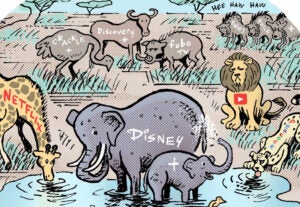 “Data-Driven Thinking” is written by members of the media community and contains fresh ideas on the digital revolution in media.
“Data-Driven Thinking” is written by members of the media community and contains fresh ideas on the digital revolution in media.
Today’s column is written by Justin Choi, CEO at Nativo.
Online advertising grew up on a foundation of interruption. Audiences sought interesting, relevant content, and advertisers competed with editorial for their attention. Marketers then evaluated the success of their interruption by measuring clicks.
Nearly 20 years later, the industry agrees that click-based measurement is severely flawed. The correlation between clicks and conversion is virtually nonexistent. Yet, most media planners still rely on traffic and clicks as go-to indicators of campaign success.
As a result, today’s Internet has become an interruption arms race. The average user is served 1,707 different banner advertisements per month. In a high-content world where consumers have great control over how they consume media, and can easily avoid display ads by ad blocking or trained blindness, the interruption arms race is one that advertisers cannot win.
Interruption is a tactic that only works in a low-content world, such as years ago where there were only seven primary TV channels and new content arrived once a month in a print magazine. Back then, there was dramatically less stimuli competing for a user’s attention.
Content Is The New Creative
To compete for attention in today’s media-rich world, brands must learn to be authentic and relevant, and most importantly, they must become part of the value proposition offered by the very content with which they compete.
Progressive brand marketers know this. NewsCred’s content manifesto notes that 79% of marketers report their organizations are shifting to branded content. This has been the driving force behind content creation and curation services, platforms offered by startups, brands hiring journalists directly and agencies hiring chief content officers and announcing brand content initiatives.
The move from ads to content as the primary brand communication medium is pushing our industry into a new era of advertising. We are in the early stages, shifting from interruption to engagement, using precise data to provide more value and refocusing success measurement from clicks to attention.
The Attention Marketer’s Toolkit
Content is the new medium for branding and attention is the correct measure of content. By and large, marketers’ KPIs have not kept pace with this shifting landscape. An overreliance on clicks as the barometer of engagement only perpetuates interruption, rather than fostering an advertiser economy built on attention. The growing movement of sophisticated publishers such as the Financial Times and Upworthy moving away from clicks to attention time and other engagement-based metrics serves as a bellwether to brands and the rest of the industry.
Eschewing impressions and clicks alone, there are several attention-based metrics to know and understand.
Engagement rate: The percent of visitors that consume content for five seconds or more. Engagement rate signals an authentic intent to engage, filters out the impact of click-baiting and accidental clicks and adds a quality dimension to clicks.
Average time on content: With a growing mountain of media competing for a finite amount of consumer attention, marketers must measure how much of the attention pie they are capturing. Average time on content allows brands to track how much time users engage with their content. By factoring in the amount of content – number of words and images – and combining engagement metrics, such as scroll depth, marketers can also measure content completion rate.
Social sharing: Social sharing can be a powerful amplifier of reach and is a signal that content resonated strongly with the exposed audience. Analytics providers such as SimpleReach help marketers achieve a comprehensive view of social activity, but others have shown social sharing can be a false positive and not necessarily a bulletproof sign of engagement. Therefore, marketers should not use it as a standalone signal.
Our industry is quickly evolving away from the elementary measure we grew up on – the click. While it’s always hard to move on from a first love (or a codependency), it’s a necessary step toward a brighter and more meaningful future for digital advertising.
Only by shifting gears and focusing on attention as the new unit of measurement can the industry prepare itself to correctly answer more advanced, meaningful questions around attribution and digital advertising’s true impact on consumer behavior.
Follow Justin Choi (@JustinCie), Nativo (@NativoPlatform) and AdExchanger (@adexchanger) on Twitter.












